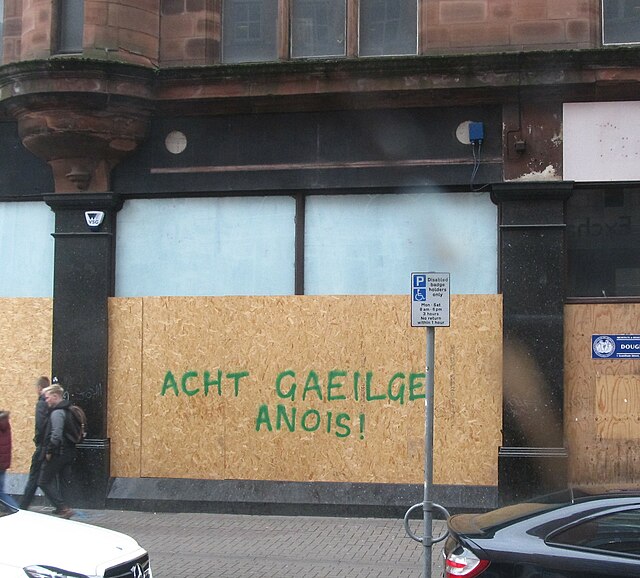Since releasing their eponymous debut album in 1981, Sonic Youth have been hailed as one of the most important and accomplished bands of the ‘80s, the ‘90s and currently the ‘00s; 2009 seeing the completion of their sixteenth studio album to date (as well as a backlog of singles, videos and bootlegs). Band-member Thurston Moore once proclaimed “we’re going to stop after a thousand albums”, and given the band’s longevity and ability to withstand the testament of time, this looks more and more likely to be the continuous goal at which the band keeps plugging in the future.
Sonic Youth burst onto the scene in the ‘80s, presenting violent imagery alongside the sheer noise of similarly violent guitar. Taking the post-punk hardcore scene by storm, they saw their success culminate in 1990 with their 7th studio album, ‘Goo’ – a record which deals with pop culture and subsequent pop worship, alongside social issues like anger, anorexia, religion and consumer culture, to name but a few. In fact for the last few years ‘Goo’ has been continuously touted by critics, being hailed among Hot Press’ ‘Top 20 Albums all College kids should listen to’. Subsequently, and with a heads up to the people in the Hot Press offices, I too would have to agree that ‘Goo’ to a Sonic Youth fan is “Nevermind” to a Nirvana fan – a mainstream masterpiece which is a jewel to behold, and one which all out there should beg, steal (well, not steal) or borrow immediately in the event that it is not already a firmly-planted member of your record collection.
However, unlike many other underground rock bands who broke into the foyer of popular mainstream music, such as aforementioned Nirvana, Sonic Youth are still going strong, with regards to recording as well as touring. This December, Dublin will welcome the four-piece ensemble to the intimate venue of Vicar Street – the first time the band has performed in Ireland since Electric Picnic 06.
Tickets for the show are now sold out, which to me signals the integral importance of the band in music’s history; as well as their ability, as a result of 21st century accessibility to music via YouTube and the downloading culture, to rile the excitement of an older generation of once-teenagers and post-adolescents, as well as a newer, younger audience who still identify with the Youth’s penchant for volume, distortion effects, loud tones blended with soft tones, and techniques which sound – to put it simply – like the unleashing of a frenzied nervous breakdown, running past you in the street. It is for these reasons that Sonic Youth can be seen as none other than the grandparents of modern music.
As it stands, Sonic Youth are difficult to pin down in terms of musical genre. Although considered ‘alternative’ by HMV and iTunes, the truth is that this title does not do justice to the band’s plethora of genres and sub-genres. Sonic Youth sound like confusion and anxiety set to the backdrop of an avant-garde Velvet Underground record, with a type of chaos that is almost primal and yet oddly polished. Each song sounds as though the band knew exactly what they were doing – managing to pin-point that chaos, noise and explicit content in a way that it is then thoroughly mapped out in three minutes of rock, which plays by nobody else’s rules but the band’s own.
As each decade draws to a close, Sonic Youth continue to remodel themselves, refusing to linger in the annals of time and become known as ‘that band’ from the ‘80s who had ‘that song’ in the ‘90s. Instead, 2009 sees the band barrelling on down the tracks with their new album ‘The Eternal’ – an album that critics are hailing as a movement back towards the band’s underground roots, as well as a marker of their place as forerunners in modern American music.
‘The Eternal’ is a definitive gesture of what the band stands for: lengthy guitar jams, a brief history of modernity, and the downfall of modern consumer culture. This album breaks away from the pop-grunge that became so prevalent in the ‘90s and sees the band reclaiming their roots as an underground group who play music for themselves and their fans, rather than for a record label and their gruelling contract that states ‘X’ amount of albums must be sold by ‘X’ time this year. This in itself propels the album forward as one of the most independent that Sonic Youth has made in almost twenty years.
Just as we toll in two decades since the fall of the Berlin wall – commemorating that poignant moment when East Berlin was united with West – so do we recognise almost thirty years of Sonic Youth, a group who have been so highly influential on mainstream alternative rock. As December edges nearer, the ability to listen to the new album live gets closer; and as winter engulfs us in its rain, hail and sleet, it is a silver lining among the dark clouds to know that the vitality and life expressed on this record is just around the corner.
In the meantime, whether or not you have tickets to see Sonic Youth in Vicar Street, be sure to check out ‘The Eternal’ – Sonic Youth’s next stop on the totem pole towards the top of that one thousand mark, whence they will finally rest. In the meantime though, Eternal is proof that the group are just beginning to embark on a new path in a very long and successful career.






